To run the forums, host the website, and travel, I charge a universal service fee for my reviews. This review was sponsored by Yamaha. My goal is to be transparent and unbiased, this video and written review are not meant to be an endorsement of Yamaha products.
Today I got a chance to review the Yamaha Cross Core and I am super excited to share this information. Currently, Yamaha offers 4 ebikes, the race inspired Urban Rush, the mountain YDX Torc, the affordable Cross Core, and the commuter oriented Cross Connect. The Core and Connect don’t just share the same Cross name, but they are essentially the same bike frame with the Connect having more options attached for commuting uses while the Core maintains a value price while still offering key functions. The two are very similar so if you get a chance to see my review on the Cross Connect, you may see a lot of parallel information. However, there are differences, so I will point those out along the way. Years before entering the scene, Yamaha did focused research on the North American ebike market looking at needs and wants as well as pulling data from their use in brand name bikes like Haibike, Giant, etc. If I could summarize the results, I would say they are going for a balance of price, performance, efficiency, and a purist feel. Other than the Yamaha name, many will also be drawn to this bike for the price. The Cross Core is $600 less than the Cross Connect, coming in at an affordable $2.399. While only having 1 frame style option, the bike comes in 2 colors: Slate Gray or White Opal. It comes in 3 sizes, Small, Medium, and Large. For those looking to really dial in the right fit, I recommend checking out the sizing chart on Yamaha’s website as it really gets into detail on each and every measurement on the bike. The frames are a bit on the smaller size, even more so than the sizes on the Cross Connect, so stem risers are a common aftermarket accessory. It’s a extremely lightweight bike overall, I weighed the bike and came up with 44.5lbs, which is about 5lbs lighter than the Cross Connect, really an unheard of weight in many ebike segments. When comparing to its big brother, the Cross Connect, the first thing you will likely notice is the lack of fenders, rear rack, and suspension fork. This is not exactly bad news however, because not only does this keep the cost down, but Yamaha had the insight to add bosses for fenders, rear rack, and bottle cages… so really you could customize this and add them yourself to get a setup that is perfect for you. On the other hand, the bike does not have a tapered head tube, so you will likely have to get used to the rigid fork. I am happy to report that one of my favorite features made the cut on this bike and that is the battery integrated Yamaha LED headlight. The headlight is a nice aluminum alloy housed unit with internally routed wires, giving it a clean look. For tires, Yamaha equipped these 28” CST E-Series Pro’s, which are ebike specific tires rated for the higher speeds. They have reflective sidewall stripes and protection level 5 puncture protection with decent air volume (although narrower). Being somewhat larger tires, they still provide for a lower attack angle which does well to soak up the area if it gets a little bumpy. Complimenting the tires are these nice lightweight rims made of double walled aluminum alloy. There are 32 14 gauge spoke rims with eyelets which is great because that means less of a possibility that they will crack. A strong 12mm thru-axle is present on both the front and the rear wheel, which makes maintenance a cinch and really helps support the the rims making it more sturdy and capable of handling those higher speeds. Other features include ergonomic locking grips, active saddle, integrated bell, internally routed cables, a kickstand positioned out of the way for reducing pedal lock, and a 30.9mm rigid seat post.
Driving this e-bike is the compact, quiet, and reliable Yamaha PW SE mid-motor. All of the dealers that I’ve asked about this motor have said that it never comes back with warranty issues. And, that’s not surprising considering that Yamaha comes from the power sports industry and has been making internal combustion engines for decades. They make generators, motorcycles, snowmobiles, jet skis, and a whole host of other machines that get exposed to long term use in rigorous environments. The electric bike motors fall right in line with this professionalism and I have been told by many dealers that Yamaha is the most reliable electric motor brand they carry. The PW SE is their mid-level electric bike motor, and offers up to 70 Newton meters of torque. It has sensors to measure rear wheel speed, cadence, and torque. It is quite noticeable, yet very smooth at the same time. Its fluid and quiet at low pedal speeds, unlike other bikes that kind of jerk you along a bit. The power rating is 250 to ~500 watts, and the only drawback compared to higher specced PW-X drive systems is that it offers a more limited 110 RPM cadence support as opposed to 120. In short, you cannot pedal faster than 110 RPM and expect much motor assistance, it just doesn’t spin that quickly. But for a value priced bike like the Cross Core, that’s not much of an issue… Most bikes in this range are not nearly as sophisticated. There’s a plastic shell built along the base of the bottom bracket to protect the motor from rock and log strikes if you do go off road. And, the motor and battery blend into the seat tube and downtube nicely, the ground clearance is pretty good and everything feels solid and secure. I like how most of the shifter, brake, and power cables are internally routed through the frame of this bike. You can pedal with the motor turned off, and it feels very efficient because there’s no drag from reduction gearing or magnets, but there isn’t a shift sensor here. If you don’t ease back a bit before changing gears, the motor could still be active and stress the chain, sprockets, and derailleur. The Yamaha PW SE motor takes a moment to spin down, but is otherwise very fluid and natural. They advertise a ‘zero cadence’ start feature which aims to keep knee and hip pressure down, you don’t have to push very hard or for very long before the motor kicks in. For mechanicals, we have two 9 speed Shimano Sora derailleurs one for each the front and the rear making a total of 18 gearing combinations on top of the motor assists levels. The rear is a 11-30 tooth while the front is a 34-50 tooth chainring. A bit of a curious set up, having two chainrings next to each other means they can kind of act as a guide, but still the absence of a legitimate chain cover means you can still catch your pants when riding, so make sure to use a Velcro strap or something. Additionally, having the two means added weight and you could be looking at more tuneups or maintenance. Other than the chain ring setup, the other big mechanical difference between this and the Connect is that the Core has mechanical disc brakes instead of hydraulic. Mechanical disc brakes keep the cost down and are easier to adjust and maintain, but they do take more actuation and are not as responsive at hydraulic brakes. At first I was a little hesitant to get excited when I saw they are 160mm instead of 180mm, but both my test ride and experience from bike shops owners have told us that 160mm does indeed get the job done. The brakes also have this nice caliper with heat sync to dissipate all that heat coming off the brakes better. Also, having a slightly smaller rotor means it may be easier to park at a crowded bike rack. Overall, this is a Class 1 ebike with a top speed of 20mph, so I think its a really great choice.
Powering the Cross Core is a 6.6lbs, 36v 13.6ah 489.6 watt hour Lithium-ion battery pack. It’s externally mounted to the downtube, flatter and longer than many competing products, and it tips in from the left side of the frame vs. going in vertically. There’s a lot to like about the Yamaha battery packs, the casing for the 400 and 500 watt hour packs is the same, so it’s backwards compatible if you own a second e-bike with the smaller pack. Maybe you get the Urban Rush model and Cross Core and then share packs between friends or family? While making this interview, I was informed that the Accell Group (owners of Haibike and other brands) have been hired to supply additional battery packs and service for customers in need. The pack is removable with lock and these unique neat looking little keys. There’s a sturdy, and wide, plastic loop at the top of these packs for secure mounting and transport. There’s even a sealed LED battery indicator built into the battery casing, so you can estimate how full it is without mounting to the bike or turning the bike on. And, the locking cylinder design seems sturdy. I like how it’s positioned up high on the mounting interface to reduce debris and dust exposure while riding. As it is currently designed, the charging interface is positioned low on the left, directly in the path of the left crank arm. This creates a point of vulnerability because the charging plug design is relatively thin and seemingly delicate, made of narrow hard plastic. In comparison to Bosch, (which uses a wider rubberized plug) I’m always concerned about stepping on the tip of the Yamaha charger tip and I definitely do not appreciate how long, bulky, and heavy the charger itself is, weighing in at 2.3lbs compared to Bosch at 1.6lbs. The fast 4amp output is much appreciated given the 500 watt hour battery, but this charger is one of the bulkiest on the market at this time and I haven’t seen a portable option from Yamaha yet, as I have from Bosch and Brose with some Haibike and Specialized models. In conclusion, this battery pack is great in many ways but definitely has some room for improvement, mostly with the bulky charger. It’s best to store any Lithium-ion battery in a cool, dry location, and avoid dropping and discharging below 20% to maximize stability and lifespan.
This bike features the excellent PW-X display. Yamaha has drawn earlier early control interface designs to create a durable but feature rich offering that maintains their Micro-USB port. I love that they kept this interface because it can be useful if you use a smartphone for GPS navigation, Strava, or music, as well as diagnostics and software updates. However, the 500ma rating means it may not be enough juice to power a newer iPhone at this time. The PW-X user interface consists of a compact LCD screen, positionable on either side of the stem, and a remote button pad, usually attached near the left grip. This button pad was still very reachable for me during the test rides and remains functional with the second set of triggers to control a front derailleur as is the case with the Cross Core. Buttons include a rubberized power button and light button on the display console along with plastic select, up, down, and walk mode buttons on the control pad. Once the display is turned on, the most basic interactions are to arrow up and down through Off, +ECO, ECO, STD, HIGH, and EXPW. Select allows you to navigate through different sub menus including odometer, trip meter, average speed, maximum speed, distance (range estimator), pedal cadence, time, and battery percentage. It was neat being able to test my pedal cadence on the fly, I really appreciate the range estimate to help gauge when to switch down assist levels in order to make it home without running out of power, and the 10-bar battery infographic and battery percentage drive this point even further. You can enable Bluetooth, disable the USB port, and even remove menus from that long list by holding the select button to get into a settings menu. There are even some deep dive options to tell both you and the service shop about various status updates with the bike and its electrical system too, very nice. And, there’s one final treat with this display. In addition to the blue-backlit LCD screen, there’s a colored light strip that matches up to the different assist levels. I think the idea here is to make it easy to glance down and know what level of assistance is enabled. It’s a great concept because the LCD itself is on the small side, but in practice, I found the LED readout to be difficult to make out in bright daylight. At night and in the woods it probably works best, and might even be distracting. And so, it’s also nice that you can completely disable the LED light strip back in the settings menu. All in all, this display does an excellent job. It mostly stays out of the way and is easy to interact with while pedaling, even without looking down because of the sloped clicky control pad design. It is not removable and cannot be swiveled to reduce glare, but the large plastic bezel looks tough and seems well protected inline with the stem. I love how clean and open the handlebar is, allowing plenty of room to attach a phone or light, the position of the display it self stays pretty protected by the stem and handlebars. Note that there is light button to activate the integrated lights as well. Overall, it is a bit of a busy cockpit with 2 finger brake levers, trigger shifters on the left and right for both derailleurs, and the display and controls.
For an entry level ebike to Yamaha’s lineup, there is surprisingly a lot to talk about with the Cross Core. I almost hesitate to call it value priced because of what it manages to accomplish and the professional manner in which it does so. It has this great minimalist and lightweight feel while giving most people everything they love in a regular bike as well as an ebike. In both the review for the Cross Connect and this Cross Core, I mentioned the redundancy of the two derailleur setup. After riding the Core, It kind of ‘clicked’ with me and I realized that some people may enjoy that shifting feeling. Similar to how shifting in a car can give you an advantage of control and accuracy, I think Yamaha may have been looking to add that to an ebike industry that may have lost that in some ways with big powerful hub motors and throttles that feel more like scooters. I really do think that Yamaha is on track to balance price, performance, efficiency, and that purist feel. Although Yamaha is a big name and really did their homework, there are still a couple of tradeoffs to consider if you want this to be a perfect fit for you. At this point, it may feel like splitting hairs, but some of these concerns may be valid to you, so they are worth mentioning. I love the reflectors on the pedals, but the pedals are a little generic, somewhat narrow, and plastic. A small point to make, but this was likely to keep cost down and pass those savings on to consumers. I do worry about the maintenance that could come up with two derailleurs and I wish we saw some new extras like shift detection or a smaller, more portable charger, but these are all things that probably won’t hinder you enjoyment of the Cross Core itself. As a matter of fact, there is just so much smoothness, efficiency, cleanliness, and overwhelming reliability, that it will likely be a standard bearer for a long time as to how to get everything in harmony. It’s no small wonder as to why they use a tuning fork for their logo, this bike strikes fantastic balance for affordability and performance. It has a considerate 3 year warranty backed by a 65 member and growing dealer network. The dealers get reimbursed for work done too, so any of them should be happy to help you with any needs should they arise. With an MSRP of $2,399, it will impress many looking for a great bike from a company with a great reputation that don’t want to spend upwards of $5,000.
As always, I welcome questions and feedback in the comment section below. Whether you own the bike, have taken a test ride, or are brand new to the space, my goal is to provide an objective and honest resource. You can also join the Yamaha Ebike forums and share your own photos, videos, and review updates to help others! Have fun out there, and ride safe :)
Pros:
- Quiet efficient mid-drive PW-SE motor, proven and reliable tech with a great natural feel and protected display
- Has a minimalist look and feel, keeping mechanical components connects and in harmony while only weighing 44.5lbs
- Comes in 2 colors, Slate Gray or White Opel, also comes in 3 sizes, Small, Medium, and Large
- Has a strong thru-axle for both the front and the rear wheel, 12mm on each, great for maintenance and stability
- Has a nice set of 28” CST E-Series Pro’s, which are ebike specific tires rated for the higher speeds, including reflective sidewall stripes, and protection level 5 puncture
- Some nice lightweight rims made of double walled aluminum alloy, 32 14 gauge spoke rims with eyelets which is great because that means less of a possibility that they will crack
- Integrated bell and kickstand, with the kickstand being positioned out of the way to avoid pedal lock when backing the bike up
- The PW SE is capable of measuring rear wheel speed, cadence, and torque, it is rated at 60nm and 250-500w of power with 110rpm cadence support
- The drivetrain and powertrain play well together, there are two 9 speed Shimano Sora derailleurs (one for each the front and the rear) making a total of 18 gearing combinations on top of the motor assists levels
- 160mm Shimano mechanical brakes come standard with 2 finger levers, low maintenance, easy to adjust, and adequate stopping power for this lightweight setup
- 36v 13.6ah Yamaha battery with a 4amp charger, a great upgrade charging quicker than the 2amp chargers we sometimes see on value oriented bikes
- The PW-X display is positioned wonderfully by the stem and handlebars, keeping the already rugged aesthetic even more protected in case of a crash or debris
- Most companies do a 1 or 2 year warranty, its nice to see a big name like Yamaha get competitive and offer a 3 year warranty, really standing behind the product
- A great balance of price, performance, efficiency, and a purist feel
Cons:
- The pedals are a bit narrow, plastic, and somewhat generic, likely chosen to keep costs down
- Although the bike is missing some of the Cross Connect’s features, they left room to add your own in the fender bosses and rear rack bosses, which is great, but I wish they had kept the tapered head tube so you could swap out that rigid fork
- Like the Cross Connect, the lower part of the battery houses the charging port and when mounted is in the way of the crank arm, so do be mindful when charging on the bike
- Two derailleurs mean added weight and could be more maintenance and tuneups, similarly, there is no chain cover (although the second ring can act as a chain guide), so be careful with pants
- No shift detection, so ease off a bit when shifting gears to get the full smooth effect
- Yamaha’s standard battery charger is nice and quick because is is 4amps, but it is on the bulky side and has fixed long wires, making portability somewhat of an issue
- The frame integrated wiring is beautiful, however, you do see more ebikes getting battery and mounts integrated into the frame as well, it would have been nice to see that from Yamaha, considering they are seen as a premium brand
Resources:
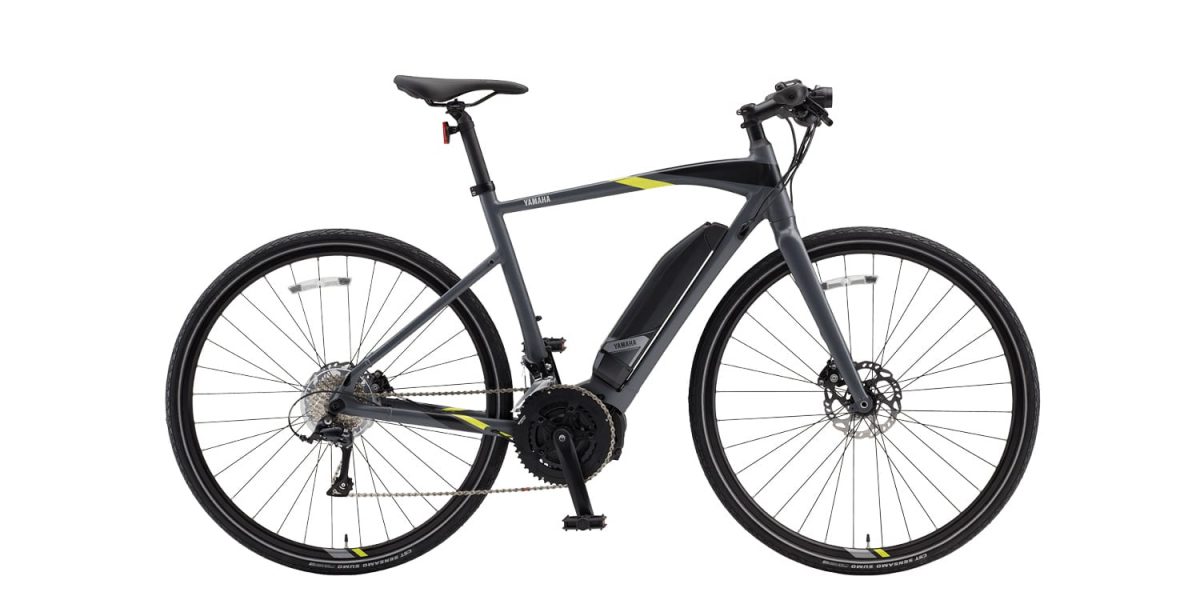















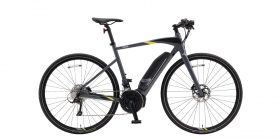
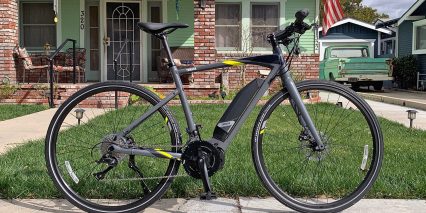

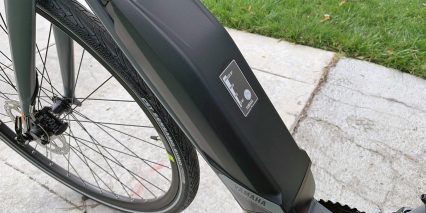
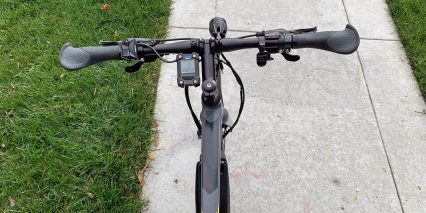
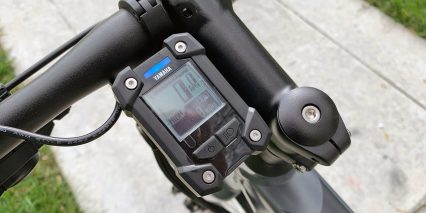
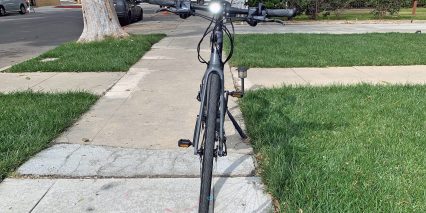
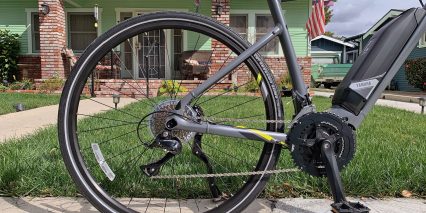
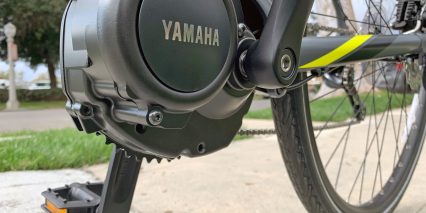
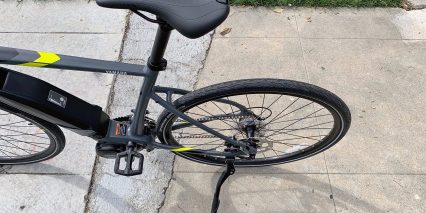
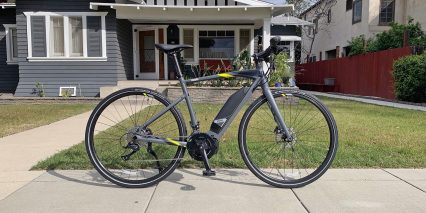
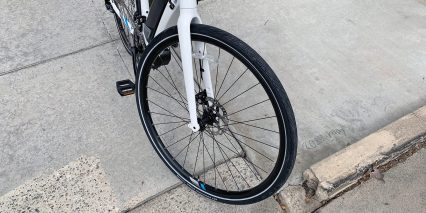
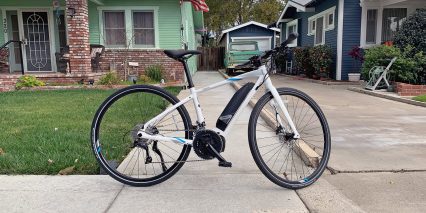
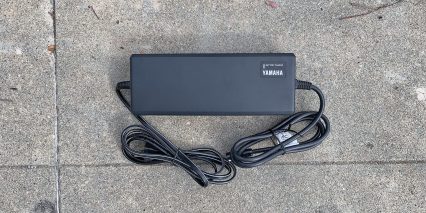
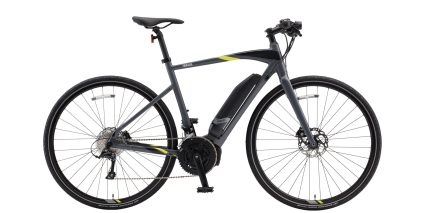


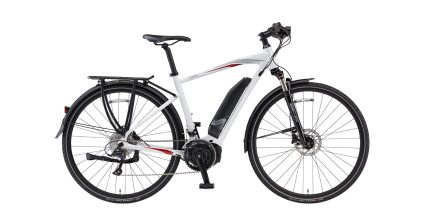
Mike
6 years agoFYI,… those “unique neat looking little keys” (three of them) are called dimple keys, and the locks they are designed for, are harder to pick with the usual tools, also having a smaller entryway than traditional cut keys, that makes even getting the tools into the lock itself, challenging to begin with. While its possible to perform ‘impressioning’, you are talking a long process (not minutes), that even a locksmith would have a harder time getting it done quickly. Just another deterrent, to prevent a ‘quick’ or easy theft. Its yet another thoughtful design point by Yamaha. Part of the many details, that they ‘sweated’ in this very well priced, (for a mid drive) ebike. The battery btw is rather light weight, particularly for the range you can get with this motor and battery combination. Its unheard of frankly, where to get the ranges I am hearing from customers, you’d otherwise both need 48 volts, and 17 to 20 AH’s. Again adding to the value of the ebike, and its rather light weight overall. It truly rides and feels like a very well tuned regular bike, which makes it very easy to ride without any assist, a huge bonus for allowing you to go further than normal, and not dreading if the battery runs out, and lessening ‘range anxiety’. Imagine this bike as an awesome work out ebike, where you can ride a long time without e-assist, or very low level, and then use the extra boost (very high torque) for those annoying steep hills, while keeping cadence higher, and even busting those high winds than can come up, and totally ruin any ride. Thus more days to ride and more geographical elevations to conquer. Amazing how light weight the 44lbs feels, when loading or just maneuvering the ebike in regular riding. A 63 to 67lb ebike, which is not uncommon these days feels like a bulky and harrowing drag, where I would feel VERY nervous if that ran out of juice, and especially since the corresponding drive trains usually have resistance too. With the Yamaha, there is basically no discernable resistance from the drive train, also helped by those larger front chain rings.
ReplyCourt
6 years agoExcellent points, Mike! Thank you for articulating each of those points. I learned a new word and background on dimpled keys from you and appreciate the perspective on weight and workout riding. Thanks :)
ReplyJohn
6 years agoI just bought my Cross Core yesterday. The first one I test rode had a persistent creaking noise. The dealer tried many things too get rid of the creak. Finally gave up and sent me to another of his shops for the same bike. No creaky noise on this one so I bought it. Got home and rode it and after a few miles… the creak! Maybe headset? But I also noticed the rear axle quick release was loose to the point that there was a lot of flex present between the frame and the hub. I attempted to adjust and tighten the quick release, which I succeeded in doing, but now the rear disc rubs. So, it feels like there are some fine tuning issues that need to be addressed. I hope to get a better feel for these concerns in the next few days as I get more familiar with the bike.
ReplyCourt
6 years agoHmm, wishing you luck with this John! Sorry to hear that it doesn’t feel perfect straight out of the gates. Hope things smooth out, maybe you could post in the Yamaha electric bike forums and ask for tips or call another shop that carries the brand to see if they’ve experienced it?
ReplyDavid
6 years agoWith the light weight wheels and tires how does it do on gravel?
ReplyCourt
6 years agoHi David, this isn’t a bike I’d choose for gravel unless I had a suspension seat post. I might also consider a pair of higher volume tires just for comfort, but also traction and stability. I’m sure it will handle alright for skilled riders, it’s just not my personal favorite setup for gravel :)
ReplyBrent
6 years agoTo the author… Please shorten your paragraphs. From thoughtco.com, paragraphs shouldn’t exceed 150 words. I did a sample check of a randomly selected paragraph in this article and it was 576 words!!!!
It’s really difficult to read your reviews due to the excessively long paragraphs.
Thanks. :-)
ReplyRobert
5 years agoOwner review: I’ve put about 1000 miles on a Cross Core now over about 3 months of commuting. It’s a fantastic bike – I’ve been super happy with it. I bought it because my office relocated and my previous workout time was now spent sitting in a car. As beginner triathlete I was eager to start bike commuting instead, but found that the extra time it required wasn’t acceptable to my family. This bike was a compromise – it shaves enough time off my commute but I can still get some exercise.
This bike is particularly well suited for this particular case. Here are some subtleties that I haven’t seen covered in other reviews.
As with other US Class 1 ebikes, this one is limited to 20mph. The Yamaha rolls off power gradually as you approach this limit, and seems to offer very smoothly varying power. That means when you get to the limit, you don’t “feel” the motor cutting in and out; it just starts getting harder to pedal at about 18 mph. In the high assist mode you can pedal fairly lightly (maybe 80 watts) and easily maintain 17.5 mph. Getting to 19.5 requires a lot more work. Basically, you can choose how hard you want to work. This is great for a commute; I can choose to get a workout or not, and it takes about the same amount of time.
Building on this: the bike has a built in bluetooth low energy power meter that you can connect to a Garmin or other fitness watch or bike computer. It provides power, cadence and speed. This measures how much power you (the rider) are putting out (not the motor), which means you get completely accurate calorie readings. It also means that if you are more serious trainer, you can do interval training and get feedback from your watch or bike computer if you are hitting your target power. Unlike a regular bike where you can end up being a bit of a jerk on the trail while doing intervals, (repeatedly passing people, only then to slow down), your actually speed won’t change very much.
Power meters for regular bikes start at $400 for a single pedal meter… it’s an enormous value that Yamaha has enabled this (it’s there because the bike has a torque sensor for the pedal assist).
I can confirm the other virtues mentioned by the reviewers hold up. It’s a great commuter – I’ve added a rack and panniers and fenders. All the bosses and bolt holes you need are already there. Even though this bike has disc brakes, don’t buy a special “for disc brakes” rack… normal ones fit it. I’m an “all weather” commuter and I haven’t seen any problems at all with moisture impacting the electronics, even in heavy downpours.
The USB port on the head unit will power and charge a phone. I put a phone case on my top tube for navigation with Google maps when I’m going somewhere unfamiliar, which has been fantastic.
Opportunities for improvement: the paint is very easy to scratch. The front brake cable rubs against the frame when the bike is turned and has worn the paint off badly in front… some judicious tape would have prevented that. Given how vertical the riding position is (at least compared with my road bike) I found a wider saddle to be more comfortable than the stock one. I wish I could adjust the speed limit up to 25mph (legal in my jurisdiction). I wish the Yamaha charger would let me specify the charge percentage like some of the Luna chargers… charging only to 80-90% can really increase your battery’s lifespan.
That’s all I got! I used to dread my commute… now I look forward to it!
ReplyCourt
5 years agoWonderful insights, Robert! I hadn’t realized the training benefits of a more accurate calorie used measurement system, it’s a rare feature and Yamaha did a great job. Your long term use feedback about the paint is noted, here’s a clear rub resist sticker pack that can be used aftermarket if anyone else is noticing this issue. Great call on the charger for your phone, I’m glad that water hasn’t been an issue and that the bike is working so well! It sounds like you’re taking one car off the road and improving your health and daily enjoyment a lot! Awesome…
ReplyDan
4 years agoAnyone else a little disappointed with the build quality and components? Yamaha’s electric drive train is amazing, but after 300 hard NYC miles, it’s so janky that it feels like they’ve slapped it onto a mid range Walmart bike. The disc brakes are weak, the brake cables have stretched over half an inch and need to be adjusted a 3rd time. The rear derailleur keeps going out of alignment with the shifter, giving me surprise gear changes, which can sound pretty violent under full load uphill. I assume a professional tune-up or five (yay 3 year warranty) will eventually settle the cable stretching issues, but I’ve also developed an wobbly headset (even after tightening) and an annoying popping sound in the front wheel while under load that is either a spoke or bearing problem (can’t identify).
They call the Cross Core a value priced e-bike, but I wouldn’t pay more than $400 for it as a bike without the electrics. One can debate if the E-drive train is worth $2k (It is pretty amazing) but I have a $700 Made in USA Cannondale Bad Boy with thousands of miles on it with regular old rim brakes that soaked up everything NYC could throw at it over 12 years with nothing but a tune up every 2 years, all original parts except for 2 tires, 4 cables and and 1 chain.
ReplyCourt
4 years agoHi Dan, your comments definitely resonate with me. It’s nice to hear you compare your experience with the Cannondale, because otherwise it would seem that you’re just putting the bike through demanding circumstances in the city. You talked about climbing and phantom gear shifts… I can relate to that, even as someone who knows how to shift really well. Once a cheaper derailleur is out of tune and the sprockets start to get chewed up or shaved down a bit and you get the cable settling etc. you really need that tune up… and there probably is a point of no return. Yamaha did seem to bank on their name and drive system, but then use a basic bike frame and components. Maybe I was just underwhelmed, but the balance of price/quality seemed off and the bikes seemed generic to me because I’m so impressed by the brand name. I only spent limited time with the bikes, so thanks for taking more time to write your extended experience. Perhaps tune it up and replace the wearing parts or just sell it and buy one of the Cannondale ebikes or something from Trek? I’ve been mixed on the Giant ebikes too.
Reply